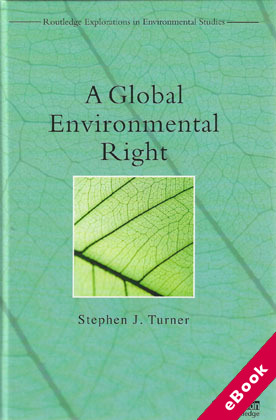We are now closed for the Christmas and New Year period, returning on Monday 5th January 2026. Orders placed during this time will be processed upon our return on 5th January.

The device(s) you use to access the eBook content must be authorized with an Adobe ID before you download the product otherwise it will fail to register correctly.
For further information see https://www.wildy.com/ebook-formats
Once the order is confirmed an automated e-mail will be sent to you to allow you to download the eBook.
All eBooks are supplied firm sale and cannot be returned. If you believe there is a fault with your eBook then contact us on ebooks@wildy.com and we will help in resolving the issue. This does not affect your statutory rights.
The development of an international substantive environmental right has long been a contested issue. Concurrently, environmental rights have developed in a fragmented way and to a limited extent through different legal regimes.
This book examines the potential for the development of a global environmental right which would create legal duties for all decision-makers relating to the environment and provide the bedrock for a new system of international environmental governance. The book analyses not only traditional international environmental law and human rights law but also the development of corporate law, the development of the General Agreement on Tariffs and Trade (GATT) and the World Trade Organization (WTO).
It uses this basis to build an understanding of the wider international legal architecture and why that architecture often leads to poor outcomes for the environment. The book summarizes the state of scientific knowledge, as it is this, which drives the justification for legal reform. It also analyses existing systems that have developed within the practice of decision-making processes to demonstrate the role that they can play within new systems of environmental governance.
Taking a problem solving approach, the book seeks to demonstrate how straightforward and logical changes to the architecture would solve fundamental problems and argues for the development of a new environmental right that creates clear legal responsibilities for decision-makers, illustrating how governments and institutions would need to adjust to make the changes operative and successful.
This problem solving approach extends to the provision of a draft treaty annexed to the book. This innovative and interdisciplinary book is of great interest to students and researchers in international environmental law, environmental politics, environmental economics, and environmental management, as well as those studying more specifically the WTO, international trade law, human rights law, constitutional law and company law.